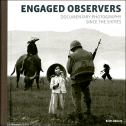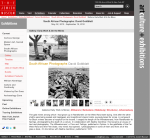In the early 1950s he began to photograph these friends in casual snapshots, meant to be little more than souvenirs of a shared time and ethos. Years later his picture taking — often of the same friends, now battered by life or approaching death — became more formal and artful, as if he were trying to freeze his subjects’ faces and energies, and to show off his photographic skills, for the history books."
Related Links:




